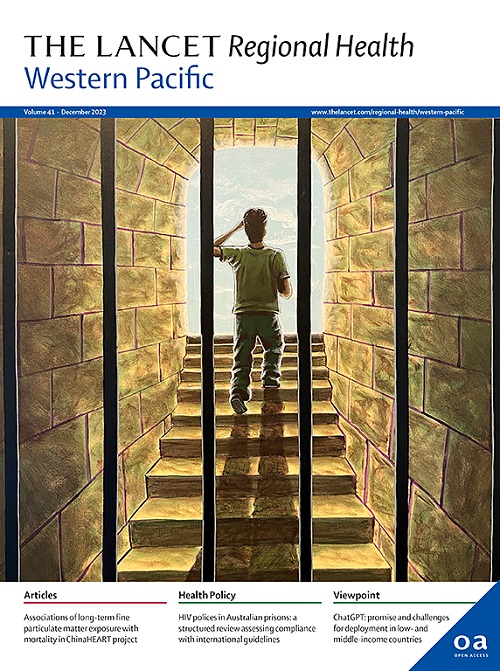The impact of sodium glucose co-transporter 2 inhibitors and glucagon-like peptide 1 receptor agonists on insulin utilisation and costs in Australia: a national retrospective observational cross-sectional study
IF 7.6
1区 医学
Q1 HEALTH CARE SCIENCES & SERVICES
引用次数: 0
Abstract
Background
Global insulin requirements for type 2 diabetes were predicted to increase by more than 20% from 2018 to 2030. However, this did not anticipate the rapid increase in use of glucagon-like peptide-1 receptor agonists and sodium-glucose cotransporter 2 inhibitors that has occurred over recent years. The current study aims to examine changes in insulin utilisation and costs in Australia from 2003 to 2023.
Methods
We conducted a large-scale observational study of national insulin utilisation and expenditure in Australia from 2003 to 2023 using the Australian Pharmaceutical Benefits Scheme. The proportion of insulin-treated people with type 2 diabetes between 2013 and 2023 was estimated using National Diabetes Services Scheme data. Joinpoint models and interrupted time series analysis were used to examine utilisation trends.
Findings
Insulin utilisation (units of insulin per person with diabetes) increased by an average of 2.71% per annum (95% CI 1.97, 3.73) from 2003 to 2015, then fell by 2.70% per annum (95% CI −4.55, −1.39) from 2015 to 2023. The proportion of insulin-treated people with type 2 diabetes increased by 1.00% per annum (95% CI 0.81, 1.25) from 2013 to 2020, then fell by 0.66% per annum (95% CI −1.62, −0.04) from 2020 to 2023. A 43% reduction in inflation-adjusted insulin expenditure was observed between 2015 and 2023 due to a combination of reduced utilisation and reduction in the price of insulin glargine.
Interpretation
Projected global insulin requirements and costs may be less than previously anticipated if reduced use of insulin in Australia is similarly observed in other countries.
Funding
No funding was received for this study.
钠葡萄糖协同转运体 2 抑制剂和胰高血糖素样肽 1 受体激动剂对澳大利亚胰岛素使用率和成本的影响:一项全国性回顾观察横断面研究
背景据预测,从 2018 年到 2030 年,全球 2 型糖尿病的胰岛素需求量将增加 20% 以上。然而,这并没有预见到近年来胰高血糖素样肽-1受体激动剂和钠-葡萄糖共转运体2抑制剂使用量的快速增长。本研究旨在探讨 2003 年至 2023 年澳大利亚胰岛素使用情况和成本的变化。方法我们利用澳大利亚药品福利计划,对 2003 年至 2023 年澳大利亚全国胰岛素使用情况和支出进行了大规模观察研究。利用国家糖尿病服务计划数据估算了2013年至2023年接受胰岛素治疗的2型糖尿病患者的比例。研究结果胰岛素使用量(每位糖尿病患者使用胰岛素的单位)从2003年到2015年平均每年增长2.71%(95% CI 1.97,3.73),然后从2015年到2023年每年下降2.70%(95% CI -4.55,-1.39)。从 2013 年到 2020 年,接受胰岛素治疗的 2 型糖尿病患者比例每年增加 1.00%(95% CI 0.81,1.25),然后从 2020 年到 2023 年每年下降 0.66%(95% CI -1.62,-0.04)。由于使用量减少和格列卫胰岛素价格下降,2015 年至 2023 年期间,经通胀调整后的胰岛素支出减少了 43%。释义如果澳大利亚胰岛素使用量的减少在其他国家也出现类似情况,预计全球胰岛素需求量和成本可能会低于之前的预期。
本文章由计算机程序翻译,如有差异,请以英文原文为准。
求助全文
约1分钟内获得全文
求助全文
来源期刊

The Lancet Regional Health: Western Pacific
Medicine-Pediatrics, Perinatology and Child Health
CiteScore
8.80
自引率
2.80%
发文量
305
审稿时长
11 weeks
期刊介绍:
The Lancet Regional Health – Western Pacific, a gold open access journal, is an integral part of The Lancet's global initiative advocating for healthcare quality and access worldwide. It aims to advance clinical practice and health policy in the Western Pacific region, contributing to enhanced health outcomes. The journal publishes high-quality original research shedding light on clinical practice and health policy in the region. It also includes reviews, commentaries, and opinion pieces covering diverse regional health topics, such as infectious diseases, non-communicable diseases, child and adolescent health, maternal and reproductive health, aging health, mental health, the health workforce and systems, and health policy.
 求助内容:
求助内容: 应助结果提醒方式:
应助结果提醒方式:


